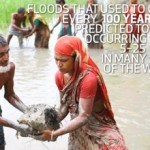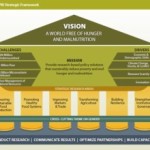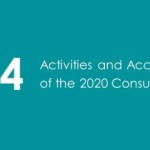 Our guest author, Jon Kurtz, Director for Research and Learning for Mercy Corps, continues our series of blog articles on resilience published in partnership with Farming First ahead of the conference “Building Resilience for Food and Nutrition Security” 15-17 May 2014.
Our guest author, Jon Kurtz, Director for Research and Learning for Mercy Corps, continues our series of blog articles on resilience published in partnership with Farming First ahead of the conference “Building Resilience for Food and Nutrition Security” 15-17 May 2014.
Resilience has an Achilles’ heel: By being all things, it risks being nothing new.
Resilience casts such a wide net that nearly any intervention – from disaster risk reduction to cash transfers to good governance – can be repackaged and deemed as resilience building.
As the concept matures, we must identify with greater precision what makes a difference to resilience – and, equally importantly, what does not. If we cannot begin to make these distinctions, the political support for resilience will wither on the vine. And agencies will continue to struggle with how to translate resilience into improved practice on the ground.
METHODS FOR MEASUREMENT
An essential first step is getting the metrics and methods for measuring resilience right. No single set of indicators will adequately capture resilience – the concept is simply too diverse.
Instead, the Resilience Measurement Technical Working Group – comprised of experts from multiple agencies, including Mercy Corps – has proposed a broad measurement framework. This framework aims to be general enough to apply in different contexts, while adhering to basic principles essential for measuring resilience.
According to the framework, resilience should be analyzed:
- As a set of capacities such as livelihood opportunities, access to essential services, or others presumed to be linked with more successful coping or adaptation to risk
- In relation to risks and shocks such as droughts, conflict, or food-price spikes – including assessment of the magnitude and levels of exposure to disturbances.
- Against development outcomes such as food security, health or poverty. Measures for these should be captured both before and after a disturbance.
This approach is a step forward. Bringing together these measurements and analyzing how they relate to each other can hone our understanding of resilience. Specifically, it tells us how certain capacities mitigate the effects of specific shocks or stressors on households or communities’ well-being.
THE FRAMEWORK IN ACTION
Mercy Corps is actively applying this measurement approach, most recently in a study in Southern Somalia. In that context, we tested common assumptions about what contributed to resilience to the complex crisis resulting in the famine of 2010-2011.
Here is what we learned about the factors that helped families cope with or bounce back after the shock:
- Women’s participation matters: Women who were more empowered over decisions in their homes had the confidence to negotiate with local authorities to gain access to essential services, like health clinics and markets – and thus better able to feed and care for their children.
- Extended social networks underpin resilience: During the crisis, families with broader social and economic relationships – particularly those that crossed clan lines – maintained or more quickly regained food security afterward.
- Livelihood diversity is not enough: To build resilience, we can’t simply work to increase the number of income sources people have. Instead, we must promote independent income sources that are not all prone to the same types of risks.
Mercy Corps is using the same research methodology in areas of the Philippines affected by Typhoon Haiyan where we are supporting economic recovery programs. We are testing our assumptions about the roles of financial literacy and inclusion – such as having and knowing how to use formal savings accounts and loans – in supporting resilience to natural disasters. Stay tuned for results in July 2014.
Studies like these are moving us in the right direction, away from intuition and guesswork towards evidence-based programming. For instance, based on our research, Mercy Corps’ programs in Somalia now place greater emphasis on strengthening the forms of social capital people utilize to cope with severe shocks.
GUIDING POLICYMAKERS FOR INVESTMENTS IN RESILIENCE
Looking ahead, our aim is to produce knowledge that policy makers can use to make informed decisions about major resilience investments. This will require applying compatible methods for measuring resilience across agencies and geographies.
There are several collaborations underway to do just this. Among them is the Resilience Learning Consortium, which is currently planning joint studies to fill key knowledge gaps, such as on the links between gender equality, risk and resilience in the Horn and Sahel.
Honing our understanding of resilience carries certain risks. Rigorous analysis will undoubtedly show that some factors or interventions are less vital to resilience in certain contexts. The results may erode support for resilience in some quarters that feel excluded from the big tent.
Yet the goal of research is not popularity but clarity – and in the case of resilience, also to protect its Achilles’ heel.





